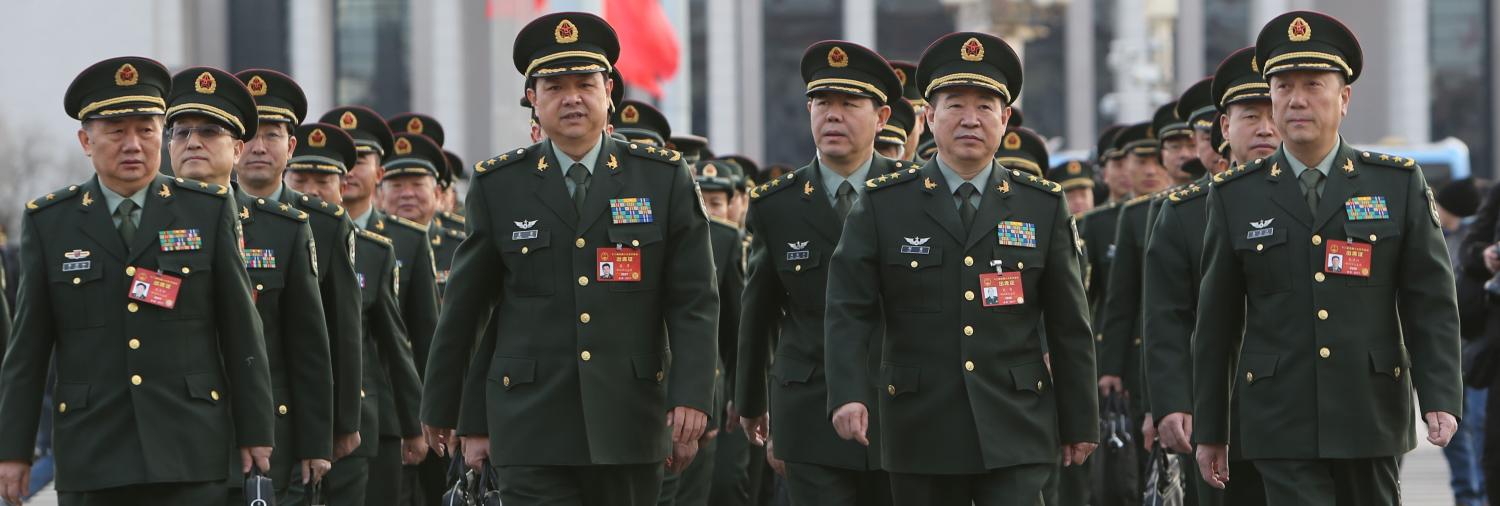China’s 2017 defence budget, announced earlier this week at the National People's Congress in Beijing, has the lowest rate of increase in years. At 7%, it is lower than the 7.6% for 2016, and represents the second year in a row that growth in defence spending has been kept below 10%, which has been the norm over the past two decades. As a percentage of GDP, it is about 1.3, much lower than the 3.3% the US spends. Indeed, this slower rate of growth is in contrast to President Trump's recently announced $54 billion increase in defence spending for 2018, a 10% hike over the previous fiscal year.
Granted, estimates from the US government and key think tanks suggest real Chinese defence spending is much higher than the official figure would suggest. But the lower growth rate in Chinese defence spending for 2016 and 2017 also demonstrate that, given the overall slow-down of the economy, it is harder to maintain the double-digit increases that have fuelled Chinese defence modernisation since the 1990s.
The questions are: what are the implications of China’s defence spending for its ongoing modernisation programs, regional security and stability, and US-China competition in the Indo-Pacific?
Analysts of Chinese defence spending pay attention to (1) rate of growth, (2) hidden expenditure, and (3) the impact on modernisation of the People’s Liberation Army in both equipment and power projection capabilities. But the first point (rate of growth) ignores the fact that the double-digit growth rate in Chinese defence spending that began in the early 1990s started from a low base and was primarily driven by the need to compensate for near-zero or even negative growth during previous decades as the country slowly recovered from the economic disaster of the Cultural Revolution. Deng Xiaoping specifically asked the PLA to make sacrifices so that limited resources could be committed to economic development.
On the second point, all countries have different accounting methods when it comes to defence budgets so the issue is less about the lack of transparency of Chinese defence expenditure than what military capabilities China can buy. In that context, until and unless Chinese defence industry is capable of delivering the kind of weapons systems and equipment the PLA needs, the shortfalls will have to be met through procurement of foreign systems and the integration of such systems into the PLA’s order of battle. Clearly, China’s official defence budget over the years has been supplemented by funds set aside to procure key foreign (mainly Russian) weapons systems.
On the third point, double-digit growth in defence spending over the past two decades has clearly contributed to the development of a leaner, better equipped, better trained, and a more internationally engaged PLA. The PLA needs new power projection capabilities to achieve ‘new historic missions’ including non-combat, non-traditional security missions such as anti-piracy and search-and-rescue. But while Chinese participation in international peacekeeping and anti-piracy operations has been viewed positively, a much more capable PLA and a more assertive Chinese foreign policy in recent years has stoked deep concern in the region, especially as tensions over territorial disputes between China and its neighbours have heightened. In fact, the region has experienced sustained growth in defence spending and a major procurement boom over the past few years largely attributable to concern over growing Chinese military power.
Meanwhile, differences in threat perceptions and visions for the future security architecture in the Indo-Pacific have increasingly brought Beijing and Washington into contention. The Obama Administration’s ‘Pivot to Asia’ was launched largely out of concern with China’s growing military capabilities and the uncertainty about how it would be applied in a region where the US has significant commercial, diplomatic, and security interests. While not engaged in anything like the Cold War arms race between the US and the Soviet Union, both the Pentagon and the PLA are clearly planning their next war with the other as the primary nemesis.
In this context, China’s announced defence budget for 2017, at an even slower growth rate than last year’s, is as much about the economic reality as it is about sending a signal aimed at reassuring Washington and the region. The message: Beijing will continue to spend as appropriate on its defence, but at a level that won’t cause too much alarm and can't be used in ‘China threat’ rhetoric. It appears Xi is both anxious that China presents a reassuring and peaceful image, and confident that even with a lower growth rate, the defence budget, if properly spent, is more than adequate to meet the requirements of major military reform, including the continuing effort to make the PLA a modern fighting force.
In other words, even at a lower rate, the absolute increase in defence spending will remain sizeable and, when combined with the reduction of the armed forces by 300,000 (many of them non-combat units and bloated headquarters staff), a greater emphasis on civil-military integration, and the weeding out of wasteful spending and corruption, will be sufficient to achieve ‘bang for the buck’.

